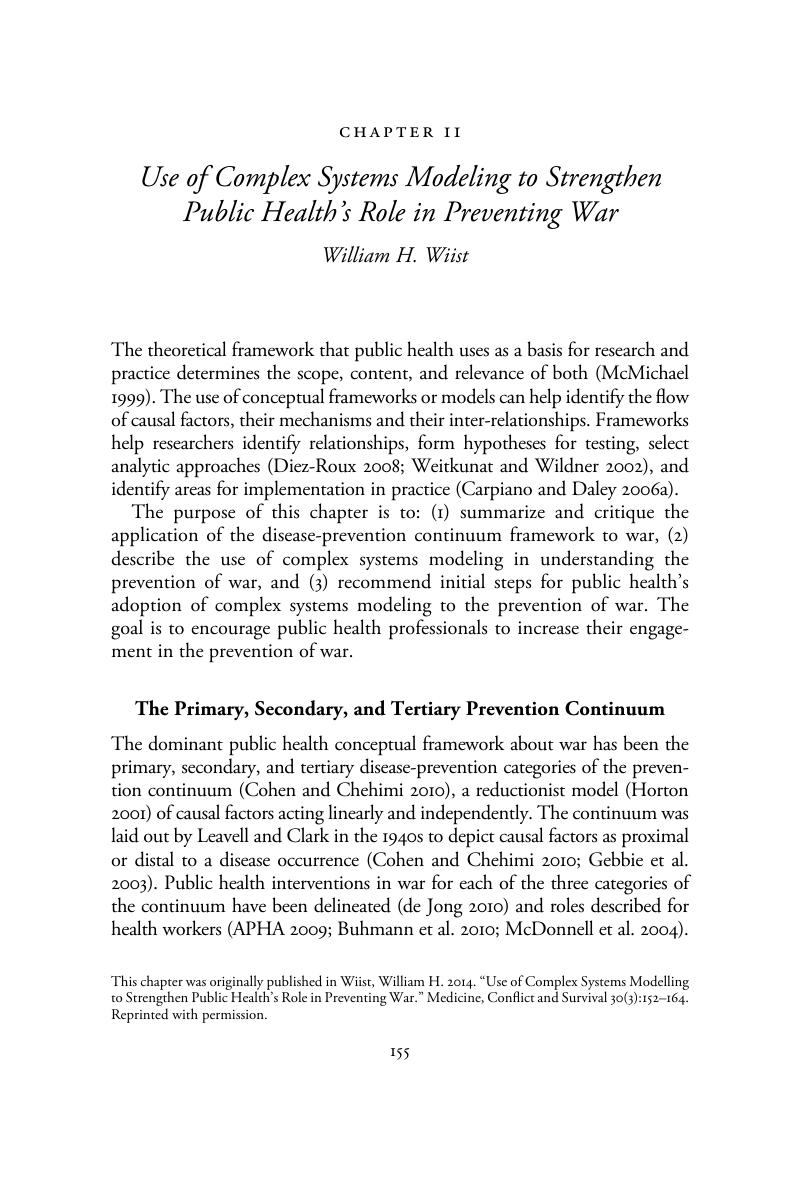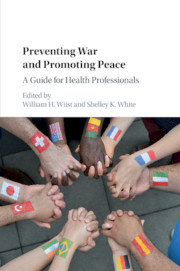Book contents
- Preventing War and Promoting Peace
- Preventing War and Promoting Peace
- Copyright page
- Dedication
- Contents
- Figures
- Tables
- Contributors
- Foreword
- Preface
- Acknowledgments
- Introduction
- Part I The Health Effects of War and Weapons of War
- Part II Social Determinants of War
- Part III Preventing War and Promoting Peace
- Chapter 11 Use of Complex Systems Modeling to Strengthen Public Health’s Role in Preventing War
- Chapter 12 The Ethics of War and Peace in the Contemporary Era
- Chapter 13 The Role of International Law in Preventing War and Promoting Peace
- Chapter 14 Lessons from a Historical View of Health Organizations’ Activism for the Prevention of War
- Chapter 15 A Gluttonous Military Budget Leaves our Social Welfare in Poor Health
- Chapter 16 Pacifism and Conscientious Objection
- Chapter 17 Countering Military Recruitment in High Schools
- Chapter 18 Civil Disobedience and Direct Action in the Prevention of War
- Chapter 19 Advocacy Skills for the Primary Prevention of War
- Part IV Teaching and Research in the Health Professions Toward the Prevention of War
- Appendices
- Index
- References
Chapter 11 - Use of Complex Systems Modeling to Strengthen Public Health’s Role in Preventing War
from Part III - Preventing War and Promoting Peace
Published online by Cambridge University Press: 28 December 2017
- Preventing War and Promoting Peace
- Preventing War and Promoting Peace
- Copyright page
- Dedication
- Contents
- Figures
- Tables
- Contributors
- Foreword
- Preface
- Acknowledgments
- Introduction
- Part I The Health Effects of War and Weapons of War
- Part II Social Determinants of War
- Part III Preventing War and Promoting Peace
- Chapter 11 Use of Complex Systems Modeling to Strengthen Public Health’s Role in Preventing War
- Chapter 12 The Ethics of War and Peace in the Contemporary Era
- Chapter 13 The Role of International Law in Preventing War and Promoting Peace
- Chapter 14 Lessons from a Historical View of Health Organizations’ Activism for the Prevention of War
- Chapter 15 A Gluttonous Military Budget Leaves our Social Welfare in Poor Health
- Chapter 16 Pacifism and Conscientious Objection
- Chapter 17 Countering Military Recruitment in High Schools
- Chapter 18 Civil Disobedience and Direct Action in the Prevention of War
- Chapter 19 Advocacy Skills for the Primary Prevention of War
- Part IV Teaching and Research in the Health Professions Toward the Prevention of War
- Appendices
- Index
- References
Summary

- Type
- Chapter
- Information
- Preventing War and Promoting PeaceA Guide for Health Professionals, pp. 155 - 168Publisher: Cambridge University PressPrint publication year: 2017



